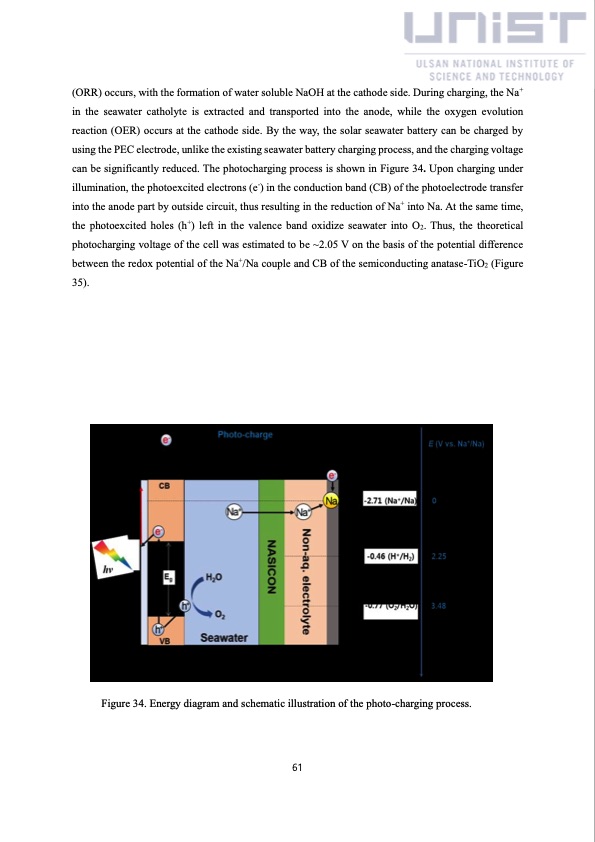
PDF Publication Title:
Text from PDF Page: 066
(ORR) occurs, with the formation of water soluble NaOH at the cathode side. During charging, the Na+ in the seawater catholyte is extracted and transported into the anode, while the oxygen evolution reaction (OER) occurs at the cathode side. By the way, the solar seawater battery can be charged by using the PEC electrode, unlike the existing seawater battery charging process, and the charging voltage can be significantly reduced. The photocharging process is shown in Figure 34. Upon charging under illumination, the photoexcited electrons (e-) in the conduction band (CB) of the photoelectrode transfer into the anode part by outside circuit, thus resulting in the reduction of Na+ into Na. At the same time, the photoexcited holes (h+) left in the valence band oxidize seawater into O2. Thus, the theoretical photocharging voltage of the cell was estimated to be ~2.05 V on the basis of the potential difference between the redox potential of the Na+/Na couple and CB of the semiconducting anatase-TiO2 (Figure 35). Figure 34. Energy diagram and schematic illustration of the photo-charging process. 61PDF Image | China solar seawater battery

PDF Search Title:
China solar seawater batteryOriginal File Name Searched:
solar-seawater.pdfDIY PDF Search: Google It | Yahoo | Bing
Product and Development Focus for Salgenx
Redox Flow Battery Technology: With the advent of the new USA tax credits for producing and selling batteries ($35/kW) we are focussing on a simple flow battery using shipping containers as the modular electrolyte storage units with tax credits up to $140,000 per system. Our main focus is on the salt battery. This battery can be used for both thermal and electrical storage applications. We call it the Cogeneration Battery or Cogen Battery. One project is converting salt (brine) based water conditioners to simultaneously produce power. In addition, there are many opportunities to extract Lithium from brine (salt lakes, groundwater, and producer water).Salt water or brine are huge sources for lithium. Most of the worlds lithium is acquired from a brine source. It's even in seawater in a low concentration. Brine is also a byproduct of huge powerplants, which can now use that as an electrolyte and a huge flow battery (which allows storage at the source).We welcome any business and equipment inquiries, as well as licensing our flow battery manufacturing.| CONTACT TEL: 608-238-6001 Email: greg@salgenx.com | RSS | AMP |